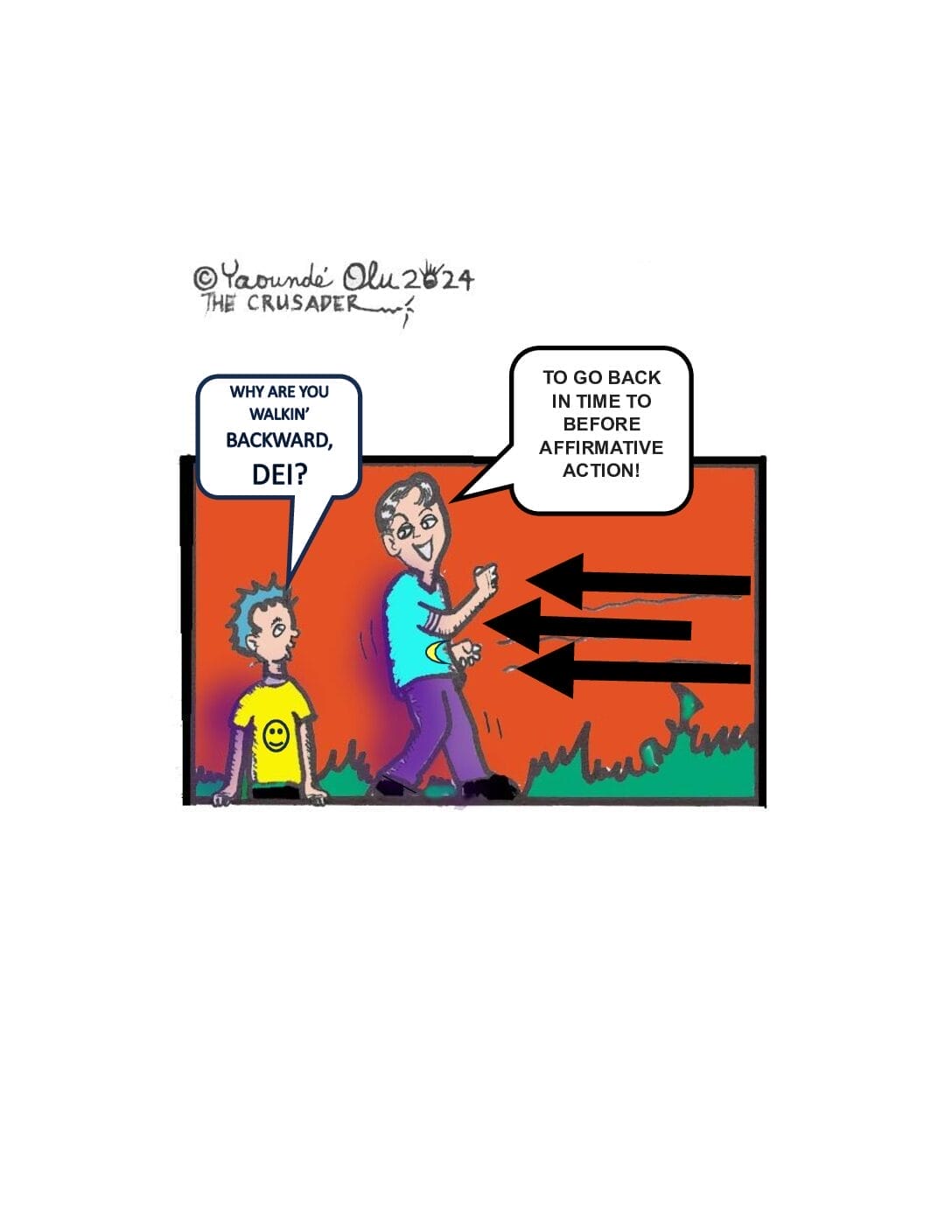Diversity, equity and inclusion (DEI) refers to the attempt to level the employment playing field by expanding inclusion of underserved groups in the workplace to ensure the creation of a more diverse workforce. Theoretically, everyone will benefit from such a scenario.
Interestingly, according to an online AARP article, age is often left out of the picture, seriously compromising the purpose of the strategy. This omission is one of DEI’s current weaknesses.
Since there are redress strategies in place, it might be prudent to ask “What is the difference between Affirmative Action and DEI?”
Affirmative Action was opposed from its inception. It attempted to remedy historical inequities historically supported by law.
Rachel Murray, in an online article entitled “Understanding the Difference Between Affirmative Action, EEO, and DEI” (10/16/2023) describes Affirmative Action “as one aspect of the federal government’s efforts to ensure equal employment opportunity for minorities, women, veterans, and individuals with disabilities.
“It grew out of deep-seated systemic discrimination against underrepresented groups, such as racial minorities and women.
“Its primary objective is to rectify past and present injustices by providing preferential treatment to historically disadvantaged individuals, often through quotas or preferences in hiring, college admissions, and contracting.”
Diversity, equity, and inclusion (DEI) on the other hand, represents a broader, more comprehensive approach to fostering fairness and inclusivity. This initiative aims to create an environment where all individuals, regardless of their background feel valued, respected, and have equal access to opportunities.
Unlike affirmative action, DEI isn’t limited to remedial measures but encompasses a holistic approach to inclusivity. (Sharon Murray)
The Equal Employment Opportunity Commission (EEOC) was specifically designed to target the protection of Title VII of the 1964 Civil Rights Act. It asserts that everyone should have an equal chance to succeed and shouldn’t face discrimination based on factors such as race, age, gender, religion, or disability.
Our problematic history of discrimination in the United States is revealed by the need for the aforementioned strategies.
Affirmative Action, which was almost always resisted by certain employers and others from the beginning, was one attempt at a remedy to address discrimination against a certain group of American citizens who were systematically targeted by white employers. The EEOC also targeted individuals who were traditionally discriminated against.
DEI is the latest iteration of a wild attempt to level the playing field, but seems to be a strategy of generalizing discrimination, as though maltreatment of job applicants is race neutral. Affirmative Action and EEOC basically grew out of the discrimination against certain kinds of people; DEI takes the “sting” out of the racial aspect with a “Kumbaya” approach.
It is commendable that there are attempts to include every American citizen in the workforce, especially because that inclusion and fair treatment is a major factor in determining people’s well-being and quality of life. After all, in a capitalist society it is imperative that the playing field is accessible; being denied access can result in many of the debilitating social and economic ills with which the African American community is well acquainted.
Let’s be clear – DEI in itself is not a panacea for the equity problems faced by Blacks; actually, it might be seen as a type of back-tracking away from the protections of what was known as Affirmative Action. DEI de-colorizes inclusion, which can theoretically result in a shrinking of the gains realized by Affirmative Action.
With that said, we must be vigilant to ensure that DEI is not just another way to ignore addressing and protecting the needs of certain groups of people, since there are no “racial” or age mandates.
The age issue has already been identified as problematic by the AARP. Diversity, Equity, and Inclusion could relate to ANYONE, and it does not address or remedy the very specific historic needs and maltreatment of Black people or people of certain ages by America’s discriminatory economic infrastructure. Aluta Continua.






